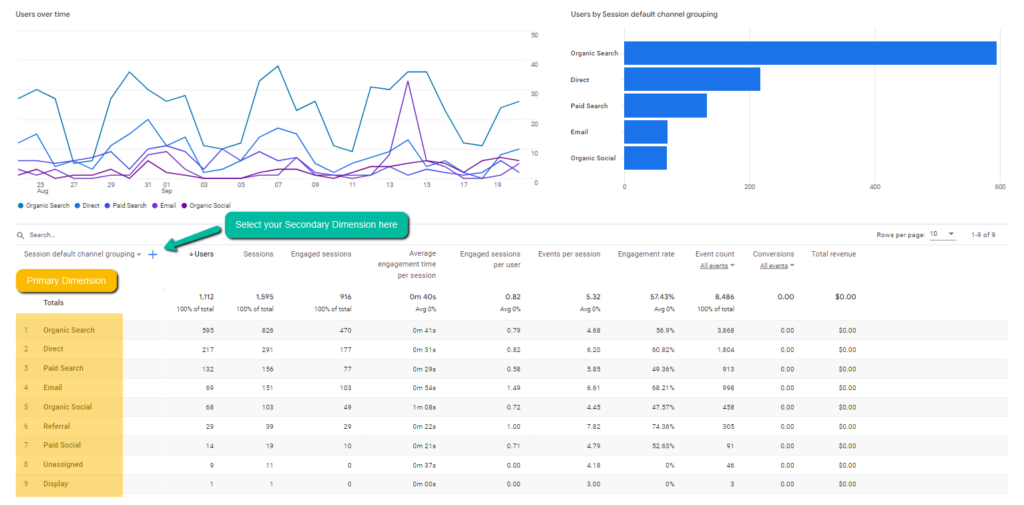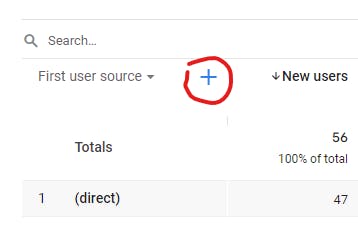Optimize Your Reporting with Secondary Dimension in Google Analytics
Optimize Your Reporting with Secondary Dimension in Google Analytics
Blog Article
Enhance Your Data Analysis Utilizing Additional Measurement in Google Analytics
Checking out the capabilities of additional dimensions in Google Analytics opens a world of possibilities for refining data analysis. The capacity to explore information even more past the surface degree provides a nuanced view that can form calculated decisions. By layering additional dimensions onto main data sets, a more elaborate narrative arises, clarifying individual communications and efficiency signs. This dynamic strategy to information evaluation holds the key to opening surprise patterns and patterns that might change exactly how companies translate their electronic footprint.
Comprehending Second Measurements
In the world of information analysis, an essential aspect to understanding is the concept of second measurements and their significance in removing much deeper insights from Google Analytics reports. Secondary measurements in Google Analytics refer to additional criteria that can be contributed to the main measurement, permitting an extra detailed analysis of data. By including additional dimensions, experts can segment and filter information to uncover patterns, trends, and correlations that could not appear when looking at the information as a whole. These secondary dimensions can offer context and a much more extensive understanding of individual habits, web traffic resources, and various other crucial metrics tracked by Google Analytics.

Benefits of Making Use Of Secondary Measurements
When assessing information in Google Analytics, the utilization of secondary dimensions uses invaluable understandings into individual habits and efficiency metrics. By including an additional dimension to your primary data, you can dig much deeper into the features of your web site visitors and their interactions. Among the vital advantages of making use of second dimensions is the capability to segment and contrast data a lot more efficiently. This division allows you to comprehend how various variables, such as demographics or web traffic resources, effect user behavior and conversions (Secondary Dimension in Google Analytics).
Moreover, second dimensions aid in determining patterns and correlations that might not be right away apparent when looking at the data alone. This much deeper level of evaluation can discover valuable information that can assist advertising and marketing approaches, web site optimization, and overall company choices. Furthermore, additional dimensions improve the context of your main data, offering a more extensive sight of customer engagement and efficiency metrics. In general, using secondary dimensions in Google Analytics can considerably boost the depth and high quality of your information analysis, bring about more educated decision-making and boosted results.
Exactly How to Add Second Measurements
By including secondary measurements in Google Analytics, individuals can acquire deeper understandings right into their data evaluation procedure, enabling for even more comprehensive evaluation of customer habits and performance metrics. Including additional dimensions is an uncomplicated procedure that can considerably boost the deepness of evaluation. As soon as in the report, situate the "Additional dimension" tab over the data table.
Studying Data With Additional Dimensions
Utilizing additional dimensions in data analysis supplies a more extensive understanding of user actions and efficiency metrics. By adding a second dimension to your key information embeded in Google Analytics, you can dive deeper right into the features of your website site visitors and their communications. For example, combining the primary measurement of 'source/medium' with the second measurement of 'touchdown page' can expose which particular web pages are bring in web traffic from different sources, aiding you maximize these web pages for much better engagement.

In significance, analyzing information with additional dimensions equips you to get valuable understandings into user behavior, identify fads, and make educated choices to boost the performance of your digital buildings.
Ideal Practices for Second Measurements
In information evaluation, integrating secondary dimensions successfully can significantly improve the depth of insights stemmed from metrics and individual actions patterns. When making use of secondary measurements in Google Analytics or any kind of other logical tool, it is critical to abide by ideal practices to guarantee the accuracy and significance of the information evaluation.
One trick best practice is to meticulously select second dimensions that match the key measurement being assessed. Selecting second dimensions that supply added context or further segmentation can provide an extra extensive understanding of the information. It is likewise necessary to stay clear of overcomplicating the analysis by consisting of a lot of secondary measurements, which may bring about confusion or dilution of insights.
In addition, it is advisable to try out different mixes of secondary and primary dimensions to discover new connections and fads. Regularly refining the option and evaluating of second dimensions based upon the details objectives of the evaluation can result in even more actionable understandings. By adhering to these best techniques, information analysts can leverage second measurements successfully to enhance the overall data analysis process and decision-making you can try these out capacities.

Final Thought
In verdict, incorporating second dimensions in Google Analytics is crucial for a thorough information analysis technique. By leveraging second dimensions alongside key ones, marketing experts and experts can discover important understandings and correlations that can educate decision-making and enhance electronic advertising and marketing methods. Understanding just how to successfully use second dimensions and complying with finest practices will certainly enable experts to draw out meaningful information and improve their overall efficiency metrics.
Additional dimensions in Google Analytics refer to added specifications that can be added to the primary dimension, enabling for a much more detailed evaluation of data. this contact form By integrating second dimensions, analysts can sector and filter data to discover patterns, fads, and relationships that might not be evident when looking at the information as a whole. Combining the primary dimension of 'source/medium' with the secondary dimension of 'landing page' can expose which certain web pages are bring in website traffic from various resources, assisting you enhance these web pages for much better interaction.
One secret finest practice is to thoroughly choose additional dimensions that match the main dimension being evaluated. you could try here By following these best practices, data experts can utilize additional measurements efficiently to boost the total data evaluation procedure and decision-making abilities.
Report this page